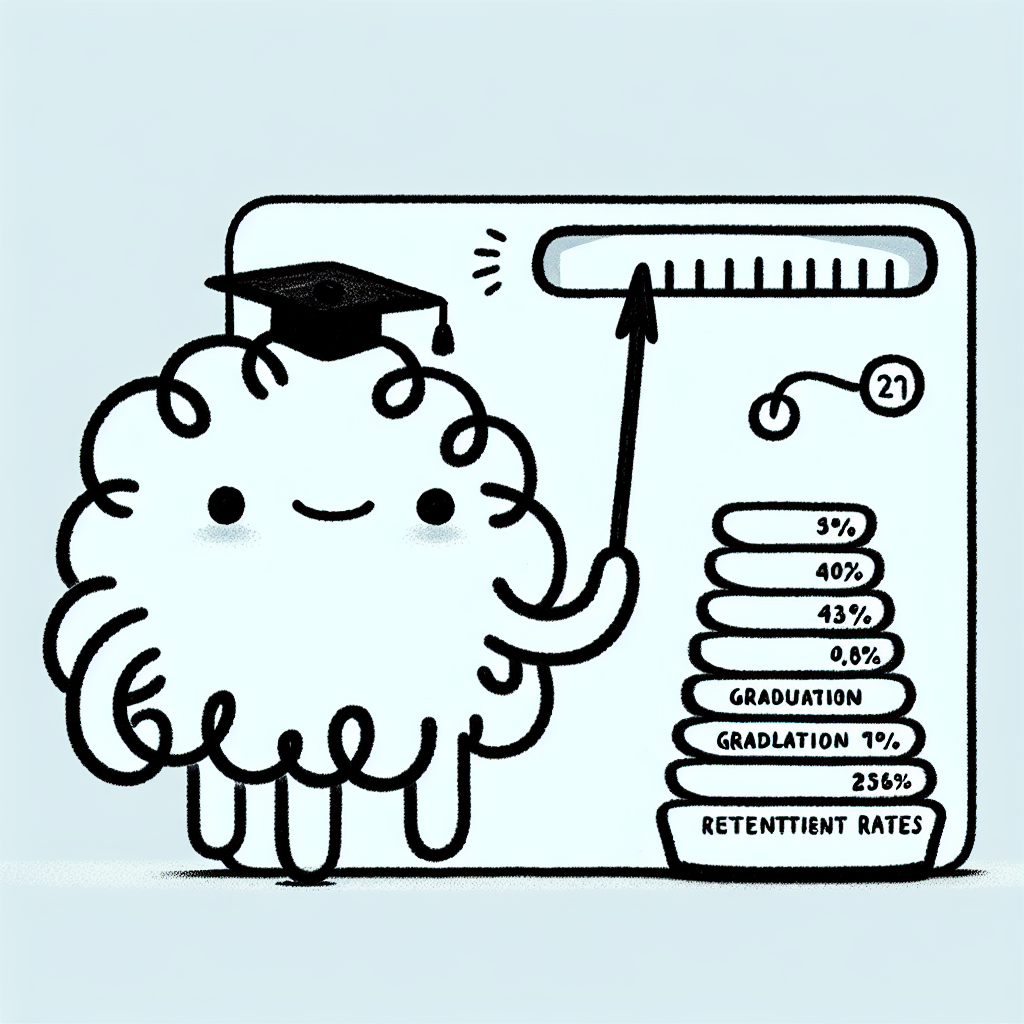Introduction
Grade Point Average (GPA) remains one of the most significant metrics in evaluating academic performance in the United States. As a standardized indicator, GPA influences student outcomes across a range of areas—including eligibility for scholarships, college admissions, and access to honors programs. In the workforce, employers often use GPA as a proxy for evaluating a candidate's diligence, consistency, and ability to meet performance standards.
By 2026, the relevance and structure of GPA may undergo shifts in response to broader changes in education policy, assessment methods, and institutional priorities. Federal education projections suggest continued diversification in student populations and increased emphasis on skills-based learning, both of which may impact how GPA is calculated and interpreted (U.S. Department of Education, 2023). Additionally, college ranking methodologies and accreditation standards are evolving, potentially leading to changes in how institutions report and value GPA.
This article will examine how GPA 2026 might reflect these emerging trends. Using federal data, institutional reporting, and academic ranking criteria, we will explore the future role of GPA within the U.S. educational landscape.

Understanding GPA in the U.S. Educational System
Definition and Function
GPA, or Grade Point Average, is a numerical representation of a student’s academic performance. It is calculated by assigning point values to letter grades (typically on a 4.0 scale) and averaging them across all completed courses. For example, an A is usually worth 4.0 points, a B is 3.0, a C is 2.0, and so on.
There are two primary types of GPAs: unweighted and weighted. An unweighted GPA treats all courses equally, regardless of difficulty, and is capped at 4.0. A weighted GPA, on the other hand, accounts for course difficulty—such as honors, Advanced Placement (AP), or International Baccalaureate (IB) classes—allowing students to earn a GPA higher than 4.0. Different schools may use different scales or methods for weighting, leading to variability in GPA calculations across institutions.
GPA’s Role in Academic and Career Outcomes
GPA plays a significant role in college admissions decisions. Admissions officers often use GPA as a standardized measure of a student’s academic ability and consistency over time. A strong GPA can enhance a student’s chances of acceptance, especially at selective institutions.
In addition to admissions, GPA is a key factor in awarding merit-based scholarships. Many scholarships set minimum GPA requirements, with higher awards often tied to higher academic performance.
GPA can also impact early career opportunities. Some employers, particularly in competitive fields like finance, consulting, and engineering, may use GPA as a screening tool during the hiring process. While its importance may diminish over time, a high GPA in 2026 can still influence job prospects for recent graduates.

National Education Trends Impacting GPA by 2026
Enrollment Projections
By 2026, enrollment across elementary, secondary, and postsecondary institutions is expected to rise, according to data from the National Center for Education Statistics (NCES) (Projections of Education Statistics to 2026 – NCES). This increase in student population may lead to larger class sizes and greater demand on educational infrastructure, both of which can impact student performance and GPA outcomes. Demographic changes, including shifts in racial, ethnic, and socioeconomic composition of the student body, are also projected to influence academic trends. These shifts may result in varied educational needs and performance levels, ultimately affecting average GPA figures by 2026.
Teacher Workforce and Student-Teacher Ratios
The teacher workforce is projected to grow modestly through 2026, but not evenly across all regions or subject areas. This uneven distribution could lead to disparities in student-teacher ratios, which directly affect instructional quality and student achievement. Research consistently shows that lower student-teacher ratios contribute to better academic outcomes, including higher GPAs. Additionally, the availability of qualified and experienced teachers plays a critical role in boosting student performance. As schools address shortages in key teaching areas, particularly in STEM and special education, the quality of instruction could either bolster or hinder GPA trends leading into 2026.
High School Graduate Estimates
High school graduation rates are anticipated to increase by 2026, as indicated by NCES projections (Projections of Education Statistics Home – NCES). With more students completing high school, GPA averages may shift depending on the academic rigor maintained during this growth. If graduation requirements remain stringent, the increase in graduates could reflect sustained or improved GPA levels. However, if academic standards are lowered to accommodate higher graduation rates, there may be a dilution in GPA significance. The balance between inclusivity and academic rigor will be a key factor in shaping GPA 2026 outcomes.
Expenditure Forecasts and Educational Investment
Education funding is projected to increase through 2026, both in public and private sectors. Higher investment in resources, technology, and teacher development is generally associated with improved student performance. Schools with greater access to instructional materials, extracurricular programs, and student support services tend to report higher GPA averages. Therefore, trends in educational spending will play a significant role in influencing GPA 2026 figures. However, disparities in funding between districts could widen existing achievement gaps, affecting national GPA trends unevenly.

GPA Trends in Postsecondary Education
College Enrollment and Academic Readiness
By 2026, undergraduate and graduate enrollment in U.S. postsecondary institutions is projected to grow moderately, with the National Center for Education Statistics (NCES) estimating approximately 17 million undergraduate and 3 million graduate students enrolled [NCES, 2023]. As enrollment expands, concerns about the academic readiness of incoming students persist. Standardized test scores and high school GPAs continue to reflect disparities in preparation, prompting institutions to reassess admissions criteria.
The GPA 2026 landscape is influenced by these trends, with more institutions adopting test-optional policies and placing greater emphasis on high school GPA as a measure of academic potential. However, this shift also raises questions about the consistency and rigor of GPA as a metric, especially as average high school GPAs have steadily increased over the past decade. This trend suggests a potential misalignment between perceived preparedness and actual college readiness.
Degree Conferral Trends and GPA Standards
As degree conferrals continue to rise—projected to exceed 2 million bachelor’s degrees annually by 2026—institutions are reevaluating academic standards and grading practices. The GPA 2026 environment reflects a tension between maintaining rigorous academic expectations and addressing equity and retention goals.
GPA inflation remains a significant factor, with research indicating a gradual upward trend in average college GPAs across most institutions. This inflation is partly driven by institutional policies aimed at improving student outcomes and graduation rates. However, critics argue that such policies may dilute academic rigor and obscure meaningful distinctions in student performance.
Consequently, colleges and universities are implementing new strategies to balance academic integrity with broader educational goals. These include curriculum redesigns, increased academic support services, and faculty development initiatives focused on equitable grading practices—all of which are expected to shape the trajectory of GPA 2026 trends.

GPA and Education Rankings Methodologies
High School Rankings
In high school rankings, GPA is an important indicator of academic performance but is considered alongside other metrics. For example, in the U.S. News 2024 Best High Schools Rankings, GPA is not directly used but is reflected in the performance metrics that influence a school's rank. These include performance on state assessments in reading, math, and science, as well as college readiness indicators such as participation and performance in Advanced Placement (AP) and International Baccalaureate (IB) exams. High GPAs often correlate with strong performance in these areas, indirectly impacting a school's overall standing.
Source: How U.S. News Calculated the 2024 Best High Schools Rankings
College Rankings
While GPA is not directly used in most college ranking formulas, it plays a significant indirect role in shaping key metrics such as graduation rates, retention rates, and overall academic reputation. According to U.S. News, these factors are heavily weighted in determining a college’s rank. Students with higher GPAs are more likely to persist and graduate, which positively influences these metrics. In addition, selective institutions that attract high-GPA students tend to score well in peer assessments and faculty resources. Other influential factors in college rankings include Pell Grant recipient graduation rates, student-faculty ratios, and financial resources per student.
Sources: How U.S. News Calculated the Best Colleges Rankings, A More Detailed Look at the Ranking Factors

Methodologies Behind Projections
Data Sources
The projections for GPA 2026 rely on comprehensive datasets from credible sources. The National Center for Education Statistics (NCES) provides longitudinal data on enrollment, academic achievement, and institutional performance. This data is supplemented with institutional reporting from colleges and universities, as well as standardized testing results such as SAT and ACT scores. These sources enable analysts to track trends over time and establish a baseline for academic metrics, including GPA.
Projection Techniques
Forecasting GPA 2026 involves modeling student outcomes based on historical data. Analysts examine patterns in enrollment, retention, graduation rates, and grade distributions to estimate future GPA trends. Statistical models incorporate variables such as demographic shifts, changes in admission standards, and policy impacts on academic performance.
However, these projections come with limitations. Models assume that past trends will continue, which may not account for unexpected disruptions like changes in educational delivery methods or shifts in grading policies. Additionally, differences in institutional grading scales and reporting standards can introduce variability in GPA-related data, making direct comparisons and future predictions more complex.
By combining reliable data sources with established modeling techniques, projections for GPA 2026 aim to provide a realistic, though not definitive, outlook on future academic performance.

Future Considerations and Implications
Technological and Pedagogical Shifts
As education increasingly incorporates digital learning tools and personalized instruction, the landscape of academic performance—and by extension, GPA 2026—continues to evolve. Adaptive learning platforms, AI-driven tutoring systems, and data-informed feedback mechanisms allow educators to tailor instruction to individual student needs. These tools can enhance performance for some students, potentially boosting their GPA, while others may struggle with inconsistent access or engagement, creating new disparities.
Moreover, the shift toward competency-based education could redefine how GPA is calculated or valued. In such systems, traditional letter grades may give way to mastery levels, prompting institutions to rethink GPA 2026 metrics to align with new learning models.
Policy and Standardization Trends
Policy developments such as the ongoing refinement of Common Core standards, curriculum redesign initiatives, and grading reforms are also shaping the future of GPA 2026. Schools are increasingly adopting standards-based grading and eliminating practices like grade inflation. These changes may standardize GPA calculations across districts, but they also risk disadvantaging students unfamiliar with new systems.
Simultaneously, a growing number of colleges and universities are shifting toward holistic admissions processes. This trend may reduce the emphasis on GPA 2026, favoring broader evaluations that include extracurriculars, essays, and personal backgrounds. As these practices gain traction, the GPA may become one of many indicators rather than the central metric of academic success.
Equity and Access
Equity remains a central concern in discussions about GPA 2026. Disparities in access to quality instruction, technology, and support services often result in significant GPA gaps among students from different socioeconomic and demographic backgrounds. Without targeted interventions, such as expanded tutoring, mentorship programs, and inclusive pedagogical practices, these disparities are likely to persist or worsen.
Educational institutions are increasingly recognizing the need for systemic approaches that support all learners. Inclusive curriculum design, culturally responsive teaching, and equitable grading policies are essential steps toward ensuring that GPA 2026 reflects true academic potential rather than systemic inequities.

Conclusion
GPA remains a pivotal metric of academic success, reflecting not only individual student performance but also broader trends within the educational landscape. As institutions adapt to new teaching methods, shifts in enrollment, and changing academic standards, GPA outcomes are likely to evolve in response.
Although exact GPA 2026 forecasts are currently unavailable, related indicators such as instructional quality, curriculum rigor, and institutional policies provide a basis for making informed projections. These factors collectively influence how GPAs are distributed and interpreted across different academic settings.
Ongoing monitoring of enrollment patterns, the quality of instruction, and institutional standards will be essential in understanding and anticipating changes in GPA 2026 trends. These elements will shape how GPA continues to function as a meaningful measure of academic achievement in the years ahead.

References
- Projections of Education Statistics to 2026 – NCES
- Projections of Education Statistics Home – NCES
- How U.S. News Calculated the Best Colleges Rankings
- How U.S. News Calculated the 2024 Best High Schools Rankings
- A More Detailed Look at the Ranking Factors














